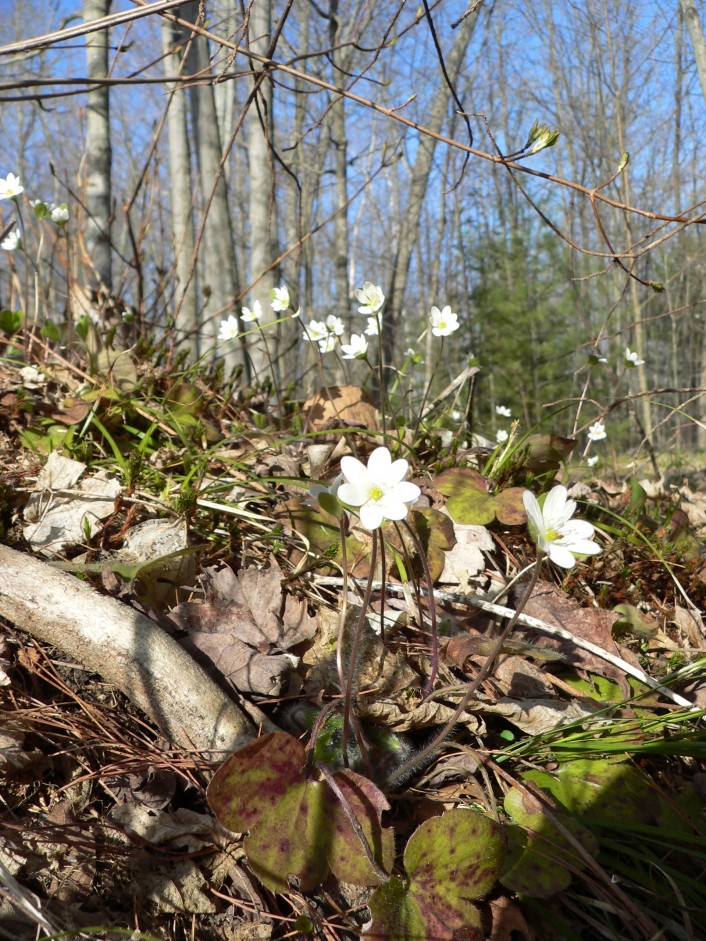With the snow disappearing, it’s a great time to get out and explore our region’s forests as they get ready for another growing season.
Be on the lookout for early spring wildflowers, also known as “ephemerals.” This group of early bloomers includes hepatica, trout-lily, spring beauty, and bloodroot. These wildflowers take advantage of the brief time when sunlight can reach the forest floor before the trees above them leaf out.
One of the earliest native wildflowers to bloom is the hepatica. In our region there are two varieties, sharp-lobed and round-lobed, which can be differentiated by the shape of their leaves as their names suggest.
Like most of the spring ephemerals, hepatica flowers are usually white or pale pink but they can also be a light pink or even purple. The flowers are made up of 6–12 petal-like sepals and appear in clusters on hairy stems.
Another common name for hepatica is “liverleaf” because of the the mottled colouring of their leaves. Right now the previous year’s leaves can be seen on the forest floor where they have remained all winter; new ones will emerge when flowering has finished.
Hepaticas prefer alkaline conditions and grow best in mature forests.
Spring beauties, also known as claytonia, are another of the early bloomers and their flowers have five petals that range in colour from white to medium pink. It’s hard to see, but each petals sports fine, delicate stripes. The flowers have a pleasant floral scent, most evident when there is a large patch of the blooming plants.
The leaves of spring beauties are dark green, long, and thin and often grow in pairs. Spring beauties grow in a variety of conditions and often thrive in open areas where other spring ephemerals suffer.
Spring ephemerals bloom when the weather can still be cold and inclement, a time when insect activity is low.
Summer flowers can easily rely on just one species of insect for pollination. The spring flower hasn’t the luxury of being choosy: it must attract whatever variety of winged life happens by to pollinate it. Bumble bees are active very early in the spring and are responsible for pollinating most of the wildflowers in bloom at this time. Other species of bees and flies will travel the forest in search of any and all flowers on a warm day.
There is a wonderful co-dependence between spring flowers and bees. Without the bees, the flowers would not reproduce and without the flowers, the bees would have no food.
And given that there is growing concern over the future of bees, especially bumblebees and honeybees, it is important that we do all we can to provide suitable habitat to ensure the survival of spring ephemerals.
Many of the properties protected by The Couchiching Conservancy include mature forests where these flowers can find a home. The Alexander Hope Smith Nature Reserve in Washago for instance is an excellent example of a mature mixed forest where spring flowers abound. There is also a hiking trail to allow for exploration of the property. Please stay on the trail to avoid disturbing the vegetation.
Gayle Carlyle is a volunteer with The Couchiching Conservancy, a non-profit, non-government land trust that protects important natural areas for future generations. For more information on the Conservancy, go to couchichingconserv.ca.

